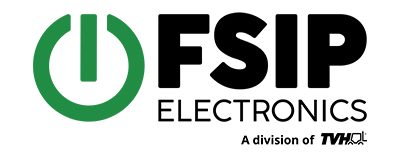by Matt Potter, Application Specialist at FSIP
In December of 2014 FSIP began selling a machine which effectively regenerates lead acid based batteries. This has stirred up quite a bit of interest, as I am sure you can imagine the implications of being able to extend the life of expensive batteries used in electric vehicle applications. I wanted to talk briefly about my personal experience with the Xtender Battery Regenerator, which if nothing else, may be an interesting read.
My background is heavily focused on electric motor controllers and electric vehicle technology. If you’ve sent a part in to FSIP for remanufacturing in pieces, burnt up, or filled with dead lizards (yes, it has happened) there is a good chance I’ve played with it at one point. I have told you this so that it makes sense when I tell you that when I found myself sitting in preliminary meetings discussing this battery regeneration machine, I was the biggest non-believer you could find! I had thought there is no way that this machine can take a battery that runs for 3-4 hours in a forklift and fix it to again last a full shift, was I ever wrong!

Fast forward to January 2015 and due to pure happenstance, I find myself with a customer demonstrating this machine’s effectiveness. This is my first time actually using this machine with a customer’s battery. Sure I have learned how the machine operates since, but now the spotlight is on me to deliver results. This particular customer manufactures mining vehicles which use a standard 72V battery pack. The very first battery will only last for 10-15 minutes operating their vehicles when fully charged, obviously a good candidate for needing some help.
I’ll have to diverge here momentarily and fill you in as to how this machine works, or at least the 100 mph version anyway. The Xtender uniquely does both discharging and restoration all in one. Once the machine is programmed for your particular battery, it first does a discharge in order to tell you what the batteries starting capacity is. Then after two modes of restoration, a second discharge is performed using the same current draw as the first. This allows you to directly compare the time it takes for discharge #1 to complete, with the time it takes to complete discharge #2, proving any capacity increase. Of course there is a little more to it than that, but you get the idea.
Now back to my first customer demonstration, I setup the machine, press start and cross my fingers! The first discharge cycle lasts one hour and forty minutes which means the battery started at 21% capacity, ok problem verified. Coming back in the next morning I knew that the battery would either be through the second discharge cycle or still working on it, either way results would be known. Having completed both phases of restoration overnight it was now time to either shine or make a mad dash for the backdoor.
As it turns out the second discharge cycle was still underway, but this time it has been going for six hours and twenty minutes already. This relates to a capacity of 78%, quite impressively proving a 57% increase in battery capacity overnight! The below graph is the report which is automatically generated by the Xtender for those of you who like to see details.

So yeah, the Xtender has officially won me over and the last few months I have been racking up frequent flyer miles, proving this new technology with other companies all over the US. If you would like to hear more, or see what the Xtender can do for your company, please call me at 800-333-1194 x227 or email xtender@fsip.biz and I would be glad to assist anytime.


2 thoughts on “The Truth About Battery Regeneration”